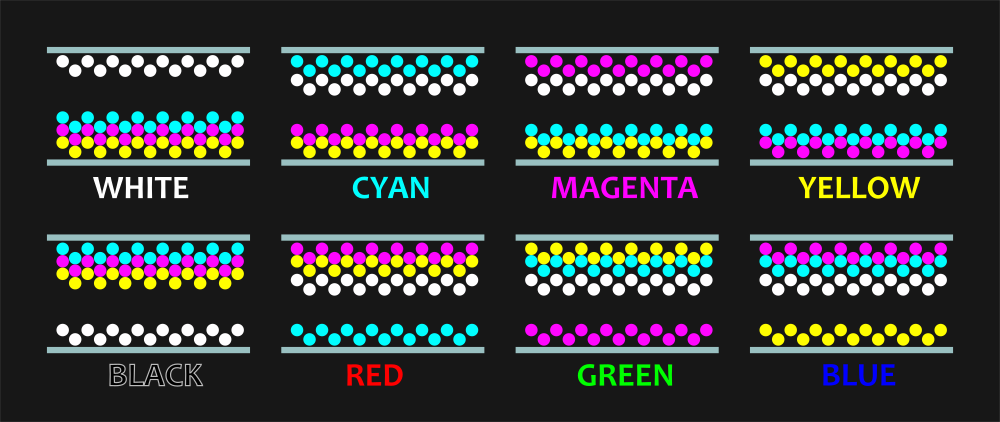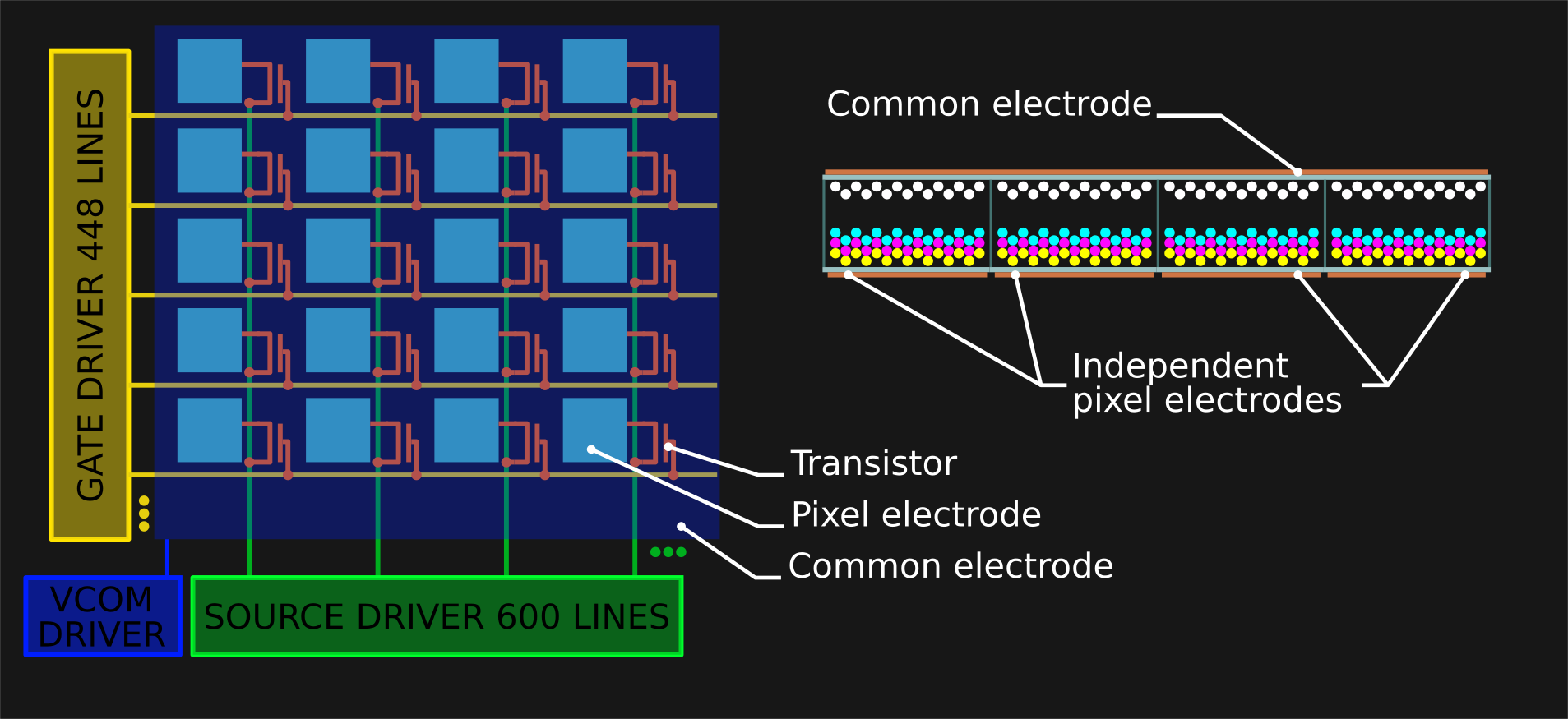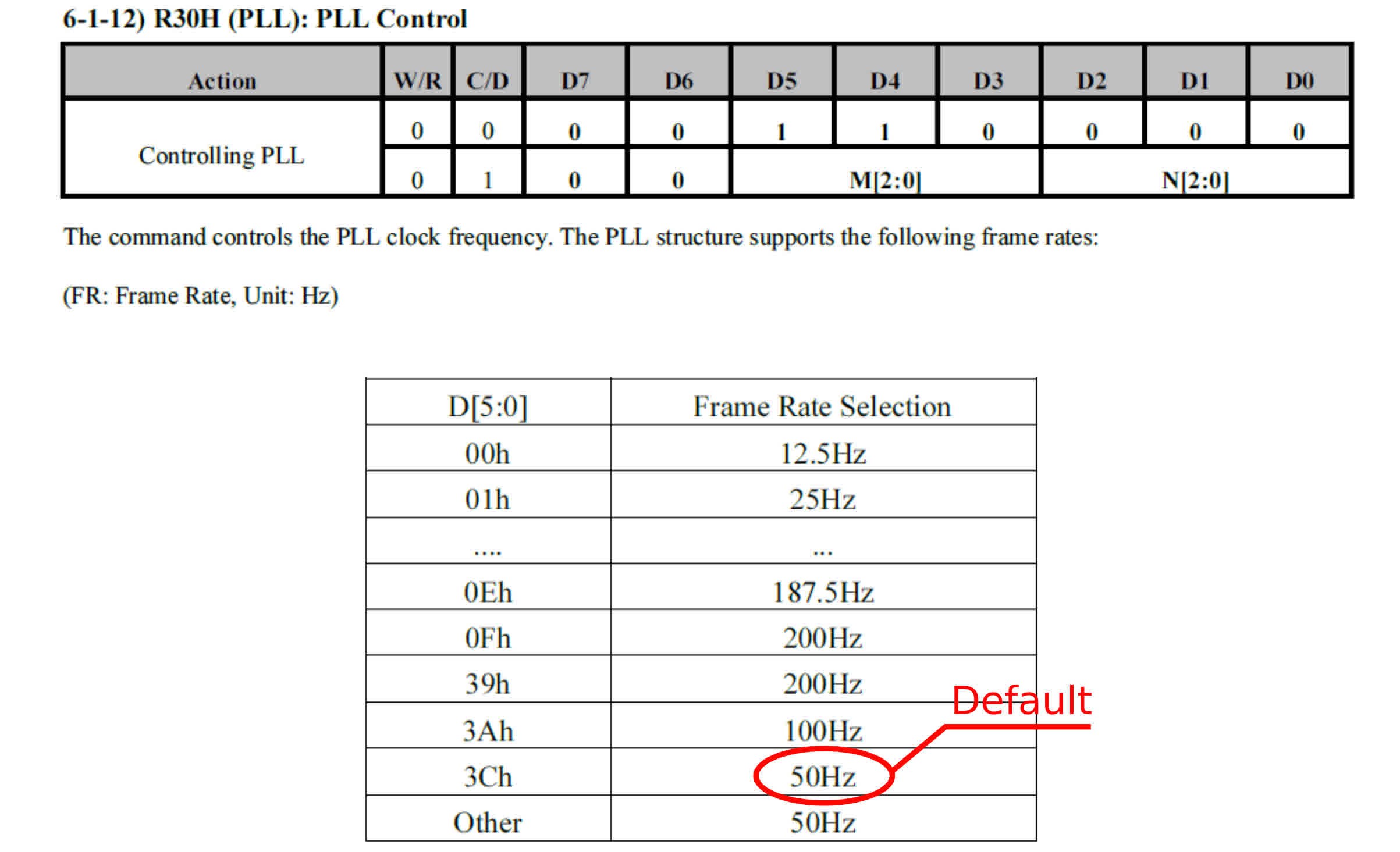Pixel Construction
Advanced Color ePaper (ACep) displays remove the need for a color filter by having all the colored pigments in every pixel. The pixels are small capsules filled with some sort of a liquid substance. Each capsule contains fore different pigments (yellow, cyan, magenta, and white), the colored pigments are transparent while the white pigment is not. Two of the pigments are positively charged while the others are negatively charged. Pigments have also different sizes and/or different charge densities. Size determines the speed at which particles move (smaller particles move faster), charge density determines the minimum required voltage for a particle to move (slightly charged particles require more voltage). By applying a variable external electric field across the capsules it's possible to change the relative position of the particles. The light that enters the pixel is scattered by the white particles, if they are on top then the pixel appears white, if there's some other pigment before the withe ones, light that passes through picks up the pigment color before been reflected by the white particles. Been the colored pigments transparent it doesn't matter the order in which they are found, all that matters is what's in front of the white particles.
The following picture shows how it is possible to obtain the eight primary colors with only four colored pigments. It should also be possible to make lighter or darker colors by hiding a faction of the colored pigments being the white pigment.

Display Construction
This section describes how the controller is able to drive each pixel with the proper electric field.
The display uses a TFT matrix like an LCD screen. The grid of pixels is sandwiched between two electrode layers. The top electrode layer is transparent and common for all pixels, spreading over the entire surface. The bottom electrode layer is chopped up into little squares, one for each pixel. Each one of these tiny electrodes is connected to the drain of a transistor. The gates of all transistors in a row are connected together, same for the source connections in a column.

The matrix is scanned line by line sequentially, a positive voltage is applied to one of the gate lines while the others are held at a negative voltage. This turns on the corresponding line of transistors. At the same time, the source lines determine what voltage is applied to the pixels in the active line. By sequentially activating one line at a time and at the same time driving the appropriate voltage on the source lines, every pixel can be individually addressed.
Frame Rate
The first time I heard of frame rate in the context of e-Paper displays I didn't really understand it. I mean we know that e-Papers take a long time to update, so why is the default frame rate 50Hz?

This is where the difference between LCDs and e-Paper comes in. With LCD screens the image updates every time the TFT matrix is scanned, with e-Papers it takes multiple frames to change the state of the pixels. The frame rate specifies the frequency at which the TFT matrix is scanned, with each scan it's possible to change the voltage applied to each pixel, but it takes multiple scans to update the image.
The following picture shows the measured VCOM (voltage on the common electrode) during an update cycle. Conveniently this voltage is exposed on the display connector and it easy to probe. All the features in this waveform appear at multiples of the frame period (20ms in this case).

LUTs
Look-up tables are what determines the sequence of voltages that are applied across every single pixel. For each voltage to be generated there is a corresponding LUT.
The display controller that I'm working with has 10 different LUTs
- VCOM: controls the voltage of the common electrode
- LUT0 - LUT7: control the voltage applied to the individual pixel electrodes (the controller supports 8 different colors)
- XON: can bypass the gate scan logic and enable all the gate lines (don't know what it can be useful for, maybe a fast way to clear the screen?)
Each LUT is like a little program, a state machine inside the controller reads the entries and determines the proper voltage on a per-frame basis.
Conclusion
To wrap this up, LUTs are what we have to play around with to make the display do what we want.
Been able to measure the VCOM voltage is quite handy, we don't have to start completely from scratch to design hour custom waveforms.
Next step I think it is to design some waveforms to characterize the pigments (charge polarity, speed).
 Manuel Tosone
Manuel Tosone
Discussions
Become a Hackaday.io Member
Create an account to leave a comment. Already have an account? Log In.